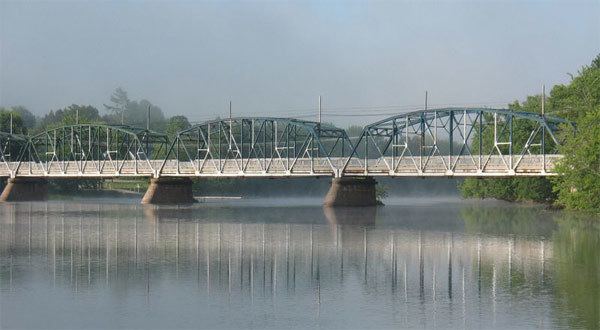Founded September 1783 Town 1991 Population 4,292 (2011) | Incorporated Village 1966 Area 21 km² Local time Wednesday 1:28 PM Area code Area code 506 | |
 | ||
Elevation 1 to 77 m (3.2 to 252.62 ft) Weather 2°C, Wind S at 32 km/h, 80% Humidity Parish Hampton Parish, New Brunswick | ||
Meeting justin trudeau in hampton new brunswick
Hampton (2011 population: 4,292) is a Canadian town in Kings County, New Brunswick.
Contents
- Meeting justin trudeau in hampton new brunswick
- Map of Hampton NB Canada
- History
- Notable people
- Government
- Education
- Transportation
- References
Map of Hampton, NB, Canada
Located on the Kennebecasis River 30 kilometres northeast of Saint John, Hampton is the shire town of Kings County. It functioned as the seat of county government between 1870 and 1965 (when county governments were abolished) and is today a service centre for the central Kennebecasis River valley, as well as being a suburb of Saint John.
History
The town was first settled by United Empire Loyalists in 1783. One area of the town, known now as the Lower Norton Shore, was originally known as the Yankee Shore because of all the Loyalist immigrants in the 1780s.
Hampton is located in the Kennebecasis River valley, where the river flows into a wide flood plain. The Hampton Marshes contain a diverse assortment of wildlife and are one of the town's major tourist attractions. Although Hampton is located far upstream from the Bay of Fundy, its high tides have some effect there nonetheless. The marshes flood every spring during the run-off, and then the water levels vary during the course of the year, offering a constantly changing landscape for different animals, birds and fish. In late years, the marshes have suffered from an invasion of Purple Loosestrife.
Notable people
The town of Hampton is the birthplace of John Peters Humphrey, (one of the drafters of the Universal Declaration of Human Rights), home of the late artist and sculptor John Hooper, MLA Bev Harrison, NHL referee Tim Peel, East Coast Music Association 2007, 2008 & 2009 nominee - singer/songwriter Jessica Rhaye, journalist/New Brunswick author Dorothy Dearborn, and journalist/New Brunswick author Stuart D. Trueman.
Steve Fossett once made a crash landing outside Hampton, New Brunswick in one of his famous ballooning trips. For his first solo around the world attempt, in the Solo Challenger departed Stratobowl, South Dakota, on January 8, 1996.
Chicago adventurer Steve Fossett called it "the most embarrassing day of my life," but a woman from the tiny, picturesque town of Hampton, New Brunswick thought otherwise. Forcing her way through the crowd that gathered Wednesday around Fossett's grounded Solo Challenger after his aborted attempt to be the first balloonist to fly non-stop around the world, she offered him a miniature Canadian flag. "Welcome to Canada," she said. Fossett sighed wearily and said thanks.
As the shire town of the county, Hampton is also home to the Kings Co. Museum and Gaol
Government
Hampton is administered by an elected mayor and town council. For the term May 2008 to May 2012, the council consists of: Mayor: Ken Chorley; Deputy Mayor: Robert Doucet; Councillor: Dwight Bond; Councillor: Peter Behr; Councillor: Todd Beach.
Gary Crossman (PC) represents Hampton in the provincial legislature.
At the federal level, Hampton is located in the riding of Fundy Royal. The current Member of Parliament is Alaina Lockhart of the Liberal Party of Canada.
Education
Hampton New Brunswick has four different schools: Dr. A.T. Leatherbarrow Primary School, Hampton Elementary School, Hampton Middle School, and Hampton High School. Their High School is represented by a variety of athletic teams including basketball, soccer, golf, football, hockey, and track and field. Their athletic mascot is the Hampton Husky.
Transportation
Highways in Hampton include Route 1, Route 100, Route 121, and Route 845. There is a modern roundabout in the town centre.
The community obtained rail service in 1859 with the opening of the European and North American Railway to Saint John, connecting to Moncton in 1860. Passenger service continued until 1994. The tracks are still in use for freight as Canadian National Railways operate them as a secondary mainline. There was also rail service to St. Martins in the late nineteenth century on the Hampton and St. Martins Railway.
